… I most certainly took the one less traveled. All this blogging about hiking and it took till now to get to Robert Frost’s famous poem? After today’s long hike, it seemed particularly apropos.
Across Halawa Valley, was the Aiea Ridge Trail. I’ve done that trail a few times now to the summit and it’s tough every time. When I found out we were going to do the adjacent Halawa Ridge Trail, I was mentally preparing myself for a strenuous hike. Going up and down all the hills like on Aiea Ridge always takes a lot out of me.
Boy was I wrong. As a hike, Halawa Ridge was one of the most pleasant hikes I’ve been on. For the most part, it’s a contoured trail all the way to the summit. It does seem like the Halawa Ridge Trail flies under the radar. One reason could be the length. At about 7 miles, the Halawa Ridge Trail is one of the longest on the island. Another reason is that the inital climb is brutal; From underneath H-3, it’s a heart-pounding climb directly to the top of the ridge.
Unfortunately because it is so long, the junk areas are elongated as well. Lots of Strawberry guava and Eucalyptus dominate the drier early parts of the hike. There are pockets of Ulei, Koa and Ohia along the way though.
There were lots of normal looking Ko’oko’olau (Bidens asymmetrica) along the trail. Then there was this guy. Kinda funny looking for a B. asymmetrica but perhaps it’s just a young one. I’ll try and find out more.
As with most hikes on O’ahu, the further you go the more native it becomes. It’s just that in this instance, we’re talking a few more miles in than most. A nice sight was this young Olomea (Perrottetia sandwicensis) in a hillside above the H-3 tunnel.
Leave it to Joel and his eagle eyes to spot this on. Here, a rare Cyanea koolauensis pokes through the Uluhe.
Once we got to the top, we had a commanding view of Haiku Valley below. And up on the windswept summit were some great plants.
A member of this community is one of the highly variable Koleas (Myrsine spp.) This narrow-leafed species is Myrsine fosbergii.
A real nice sight was all the loulus (Pritchardia martii). There were a few sprinkled here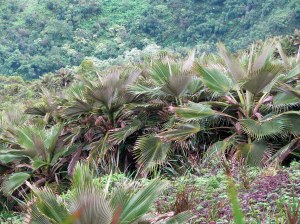 and there in the leeward wet forest, but I was surprised at the amount at the top. There were a few clusters of palms in the area with a good amount each. I think a conservative estimate would be around 100 palms.
and there in the leeward wet forest, but I was surprised at the amount at the top. There were a few clusters of palms in the area with a good amount each. I think a conservative estimate would be around 100 palms.
This was a bit of an odd sight. Amau ferns can be a dominant member of the wet summit flora. Typically, it’s Sadleria pallida. This however, is Sadleria cyatheoides, the large amau more commonly found in the mesic forest. It is the first time I’ve seen it in this habitat.
One way to tell the difference between S. pallida and S. cyatheoides is by looking at the venation. The pinnae in the foreground with the well defined veins are S. pallida. In the rear are the pinnae of S. cyatheoides.
Since it sort of became an amau day, on the way back we took pictures of the other type of Amau.
Sadleria souleyetiana has a much larger frond than the other two types. The shape of the frond seems slightly different as well; the widest point is near the back of the frond.
So 10 hours and about 14 miles of hiking later, we finally get back to the car. I should have been beat. I know I would have been if it was the Aiea Ridge Trail. The road less traveled, to paraphrase Robert Frost, made all the difference.

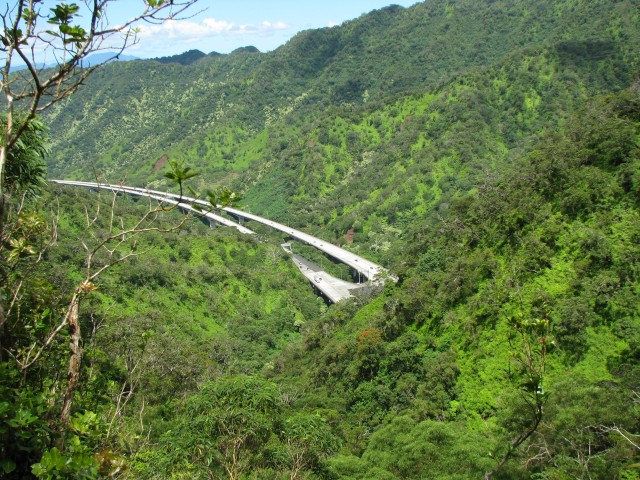

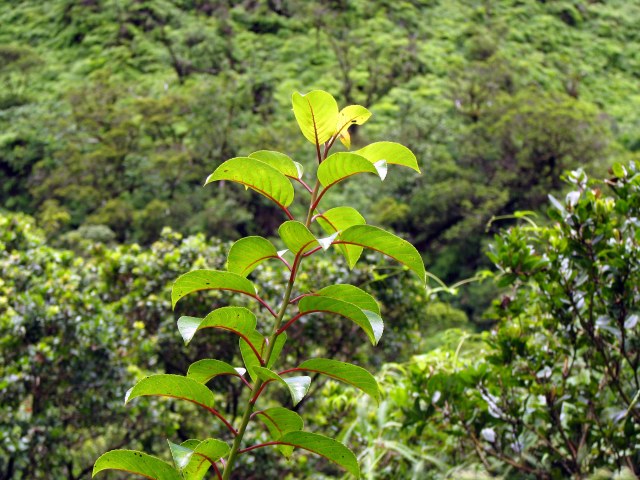



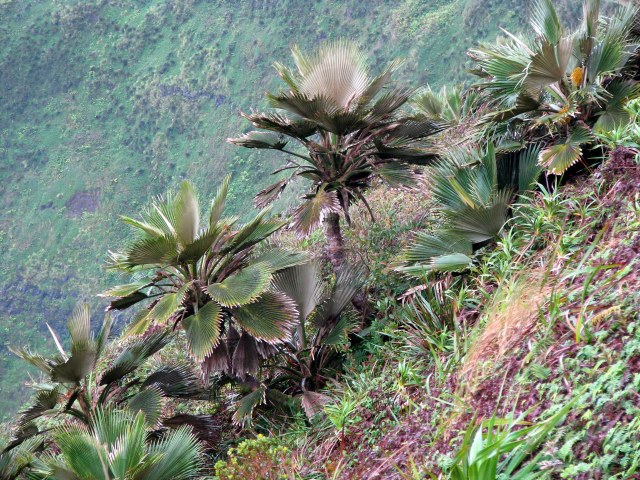



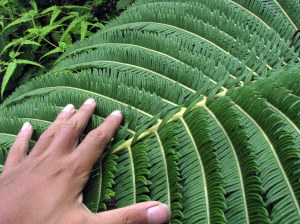
IMHO, Halawa Ridge Trail is the 2nd best preserved CCC era trail on the island with Poamoho being the first. Have you done the crossover to see the Stjohnii?
Not yet. We spent a lot of time looking at Chierodendron and Myrsine hybrids at the summit. It’s still something I’d like to see at some point though.
Sounds like you were with Joel. I have a hard enough time with the basics so most of what he does is way over my head.
Yes I was. I’m just happy to absorb a fraction of the knowledge he’s given!